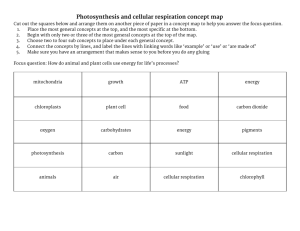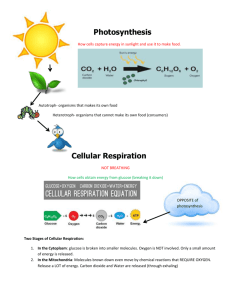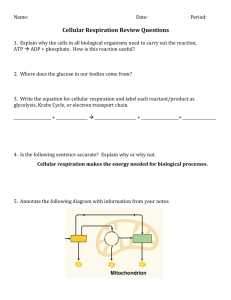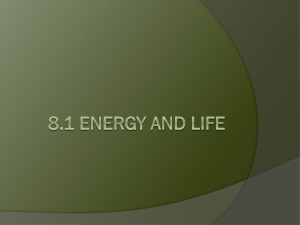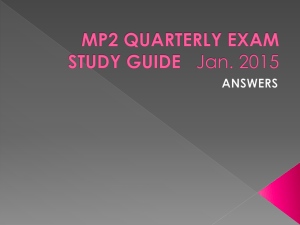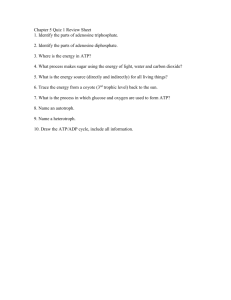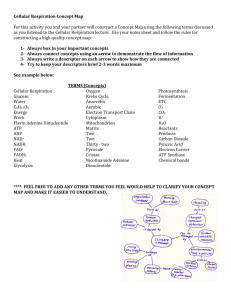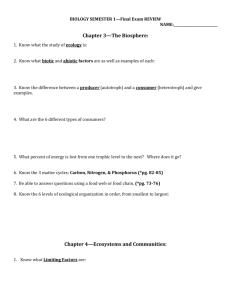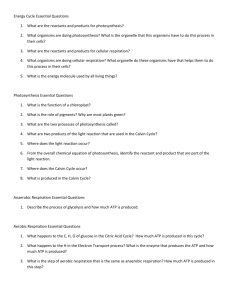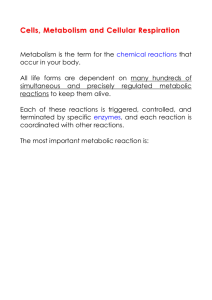Energy Processing
advertisement
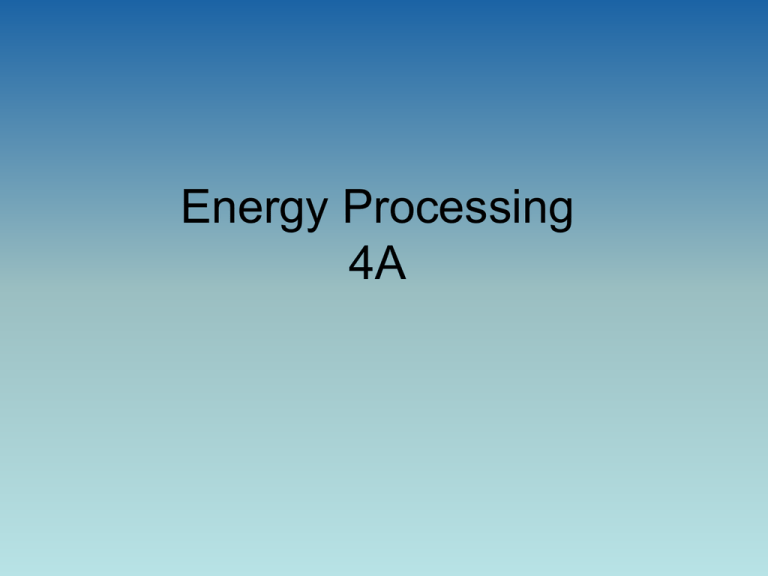
Energy Processing 4A Energy • Organisms must have energy to… …grow …maintain homeostasis. The organism is fighting against entropy …manufacture substances and tear down others Energy • It is not recyclable • Organisms need a constant supply of it • It can be stored in the chemical bonds of molecules • It escapes constantly (entropy) Energy • It comes in many different forms How organisms obtain energy • Autotrophs (producers)organisms that make their own food – Photosynthetic- make food using light energy • (plants, algae, some bacteria) – Chemosynthetic- make food using energy from inorganic molecules • (bacteria next to hydrothermal vents at the bottom of the ocean) How organisms obtain energy • Heterotrophs (consumers)- organisms that depend on other organisms for their food – (animals, fungi, and some bacteria) How organisms obtain energy • Types of heterotrophs – Herbivore- eats plants – Carnivore- eats meat – Omnivore- eats both plants and meat Cellular Respiration • Energy is stored in food (chemical energy) • Organisms must break food down in order to get the energy out so their bodies can use the energy • They release the energy from food during cellular respiration and it is temporarily stored in ATP. • Energy is there, but it’s not in a usable form Organic molecules that store energy • Carbohydrates – Glycogen in animals – Starch in plants • Lipids ATP ATP ~ adenosine triphosphate, usable unit of energy in living organisms Components of ATP: 1. Ribose ~ 5 carbon sugar that forms backbone 2. Adenine ~ one of the bases found in DNA 3. Three phosphate groups attached to the ribose backbone. ATP-ADP Cycle The energy in ATP is found between the bonds of the three phosphate groups. They are bound by unstable high energy covalent bonds. When the bonds are broken, a large amount of energy is released, and is available for use in the cell. In most reactions, the phosphate group on the end of the chain is broken off. This produces ADP (adenosine diphosphate), a free phosphate group, and energy. The ADP can be reused, and a phosphate can be attached to change it back to ATP (phosphorylation) ATP-ADP Cycle Energy in a Molecule CELLS USE ATP TO STORE and RELEASE ENERGY • • • • ADP Adenosine Diphosphate Adenine Ribose (sugar) 2 phosphates • • • • ATP Adenosine Triphosphate Adenine Ribose 3 phosphates Photosynthesis- the process of absorbing light energy and converting it into stored chemical energy. Chemical equation: Cellular Respiration- the breaking down of a food substance into usable cellular energy in the form of ATP Chemical equation: Cellular respiration is the opposite of photosynthesis: •Photosynthesis combines water, carbon dioxide and light energy to form glucose, and oxygen is a waste product. •Cellular respiration uses oxygen to help break down glucose to form ATP, and water and carbon dioxide are waste products. •The reactants of photosynthesis are the products of cellular respiration and the reactants of cellular respiration are the products of photosynthesis. •In photosynthesis light energy is stored in glucose as chemical energy so it is endergonic. •In cellular respiration energy is released from glucose so it is exergonic.
